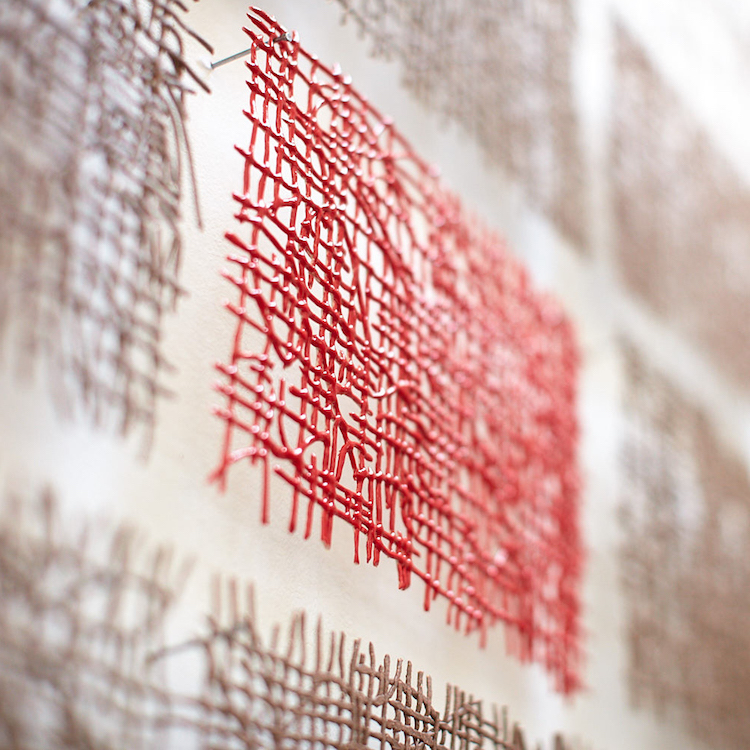LONDON––U.K.-based artist Amanda Chambers‘ conceptual wall installation Stilboestrol draws inspiration from the life of renowned English computer scientist and mathematician Alan Turing.

Following his pioneering work, including helping to break the German Enigma code at Bletchley Park during WWII, which enabled the Allies to defeat the Nazis, Turing was convicted of “Homosexual Acts.” As a result, he was given the choice between prison or chemical castration, of which he chose the latter. Turing was administered Stilboestrol, a form of estrogen. Turing was found dead just two years later––killed by suicide.

Bombe





Chambers tells Cfile.org her artistic practice explores historical narratives, often through archival materials, especially those narratives with socio-political themes and cycles of conflict.
“The work intends to highlight the life of a truly remarkable man, but also serves as a reminder of the brutality of a former penal system, one still in living memory in the U.K. I hope it also raises the plight of many suffering similar persecution around the world today.”

Amanda Chambers
About the Artist: Amanda Chambers is a British multi-disciplinary artist working in ceramics, drawing, sculpture, photography, video, printmaking and music. She is a Fellow of the Royal Society of Arts and often works with international museum collections and archives. She was recently elected to the Royal Society of Sculptors and is an active member of the Royal West of England Academy (RWA) Artist Network and Spike Island Associates.
Photos by: Max McClure

Add your valued opinion to this post.